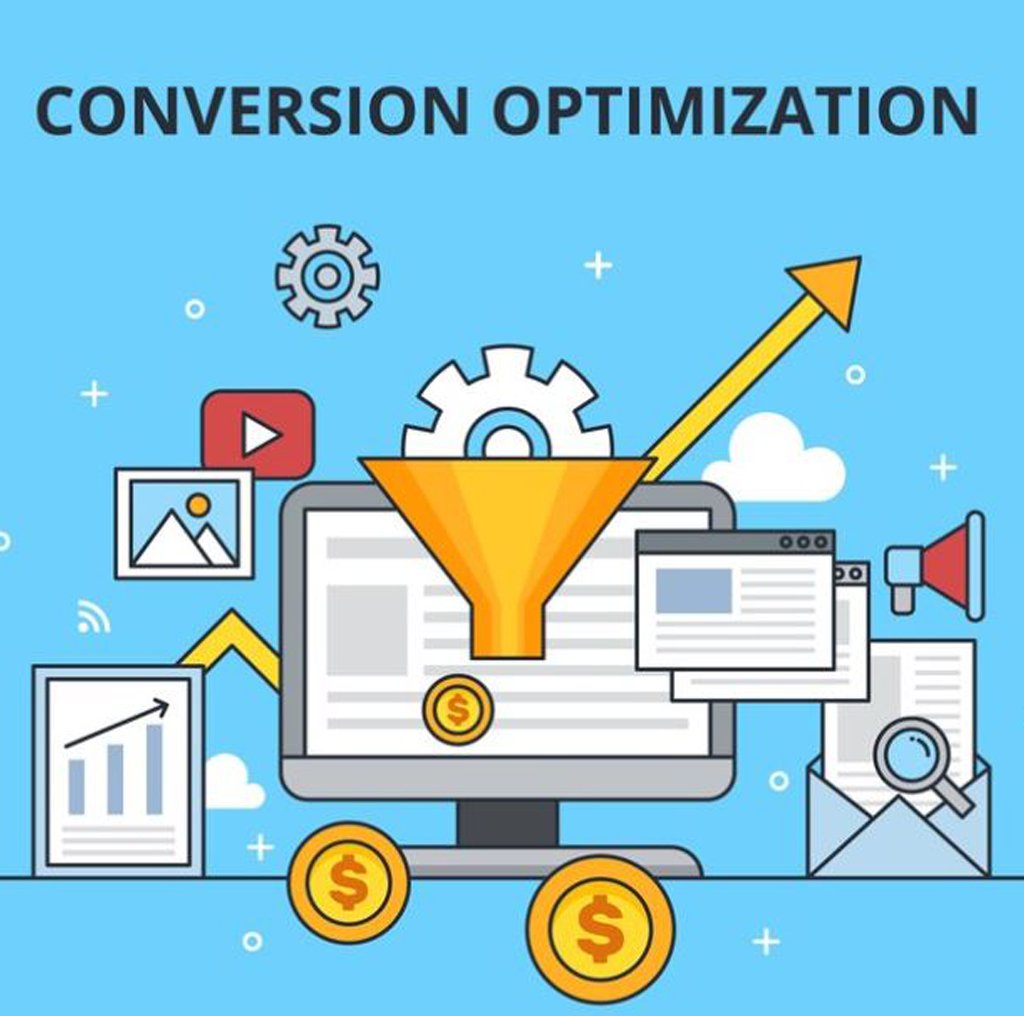Introduction to Conversion Rate Optimization (CRO)
June 03, 2024 | Digital Techtune

Conversion Rate Optimization (CRO) is a systematic process aimed at increasing the percentage of visitors to a website who complete a desired action, such as making a purchase, filling out a form, or subscribing to a newsletter. This practice is vital for businesses looking to maximize the efficiency of their online presence, improving return on investment (ROI) and overall profitability. CRO involves understanding how users move through a website, what actions they take, and what’s stopping them from completing your goals.
The Importance of CRO
In the competitive digital landscape, merely attracting traffic to your website is not enough. Businesses need to convert this traffic into tangible outcomes, such as sales or leads. CRO helps in this endeavor by:
- Improving ROI: By increasing the conversion rate, you get more value from existing traffic, reducing the need for additional spending on attracting new visitors.
- Enhancing User Experience: CRO focuses on understanding user behavior and improving site usability, leading to a better overall experience.
- Gaining Competitive Advantage: A higher conversion rate can distinguish you from competitors, making your business more effective and efficient.
- Maximizing Customer Insights: The CRO process involves rigorous data analysis, providing deep insights into customer preferences and behavior.
Key Concepts and Metrics in CRO
Understanding and tracking the right metrics is crucial for effective CRO. Here are some fundamental concepts and metrics:
- Conversion: A conversion is any desired action that you want the user to take on your website. It can be macro (such as a purchase) or micro (such as clicking a link).
- Conversion Rate: This is the percentage of visitors who complete the desired action. It is calculated as:
Conversion Rate=(Number of ConversionsNumber of Visitors)×100\text{Conversion Rate} = \left( \frac{\text{Number of Conversions}}{\text{Number of Visitors}} \right) \times 100
- Bounce Rate: The percentage of visitors who leave the site after viewing only one page. A high bounce rate often indicates that the landing page is not relevant to the visitors.
- Exit Rate: The percentage of visitors who leave the site from a specific page. Unlike bounce rate, it considers visitors who have viewed multiple pages.
- Average Session Duration: The average amount of time visitors spend on your website. Longer sessions often correlate with higher engagement.
The CRO Process
CRO is a continuous and iterative process involving several key steps:
- Research and Analysis: This step involves understanding the current performance of your website through quantitative and qualitative research. Tools like Google Analytics can provide quantitative data on user behavior, while qualitative methods like user surveys and heatmaps give insights into user motivations and frustrations.
- Hypothesis Development: Based on the research, develop hypotheses for why visitors are not converting. For example, you might hypothesize that a cluttered checkout page is deterring users from completing their purchases.
- Prioritization: Not all hypotheses can be tested at once. Prioritize them based on potential impact and ease of implementation. The ICE (Impact, Confidence, Ease) framework is commonly used for this purpose.
- Testing: Implement A/B tests or multivariate tests to validate hypotheses. A/B testing involves comparing two versions of a page to see which one performs better, while multivariate testing assesses multiple variables simultaneously.
- Implementation: If the test results show a significant improvement, implement the changes permanently. If not, analyze the results to understand why and iterate on the hypotheses.
- Review and Repeat: CRO is an ongoing process. Continuously monitor your site’s performance, conduct new tests, and make improvements.
Tools and Techniques in CRO
Numerous tools and techniques are available to aid in the CRO process. Here are some of the most commonly used:
- Analytics Tools: Google Analytics, Adobe Analytics, and Mixpanel provide comprehensive data on user behavior and site performance.
- Heatmaps and Session Recording: Tools like Hotjar and Crazy Egg visualize where users click, scroll, and move on a page, providing insights into user behavior.
- A/B Testing Tools: Optimizely, VWO, and Google Optimize allow you to create and run A/B tests easily.
- User Feedback Tools: Qualaroo, SurveyMonkey, and UserTesting help gather direct feedback from users.
- Personalization Tools: Dynamic Yield and Monetate enable personalized user experiences based on behavior, demographics, and other factors.
Case Studies in CRO
Understanding CRO through real-world examples can provide practical insights into its application. Here are two case studies:
- Amazon: Amazon is renowned for its CRO practices. By continuously testing elements like the ‘Add to Cart’ button, product recommendations, and one-click purchasing, Amazon has significantly improved its conversion rates. Their focus on user experience, personalized recommendations, and seamless checkout processes are key contributors to their high conversion rates.
- Moz: Moz, a leader in SEO software, increased its conversion rate by 52% through a comprehensive CRO strategy. They implemented A/B tests on their landing pages, simplified their sign-up process, and improved their value proposition clarity. Moz’s success highlights the importance of clear messaging and streamlined user flows in CRO.
Challenges in CRO
Despite its benefits, CRO is not without challenges:
- Data Overload: With the vast amount of data available, it can be challenging to identify which metrics matter most and how to interpret them correctly.
- Statistical Significance: Achieving statistically significant results can be difficult, especially for websites with low traffic volumes.
- Resource Intensive: Effective CRO requires a blend of skills, including data analysis, user experience design, and technical implementation, which can be resource-intensive.
- Resistance to Change: Organizational resistance can hinder the implementation of CRO strategies, especially when it involves significant changes to the website.
Best Practices for CRO
To maximize the effectiveness of your CRO efforts, consider the following best practices:
- User-Centric Approach: Always prioritize the user’s experience and needs. Understand their pain points and motivations to create a site that caters to them.
- Data-Driven Decisions: Base your decisions on data rather than assumptions. Use analytics and user feedback to inform your hypotheses and tests.
- Continuous Testing: CRO is not a one-time project but an ongoing process. Continuously test and iterate to keep improving your site’s performance.
- Clear Value Proposition: Ensure that your value proposition is clear and compelling. Users should immediately understand the benefits of your product or service.
- Simplify User Flows: Remove any unnecessary steps or distractions that can hinder the user from completing the desired action. A streamlined, intuitive user flow enhances conversion rates.
- Mobile Optimization: With the increasing use of mobile devices, ensure your website is fully optimized for mobile users. Mobile-friendly design is crucial for a positive user experience and higher conversion rates.
The Future of CRO
As technology and consumer behavior evolve, so does the field of CRO. Here are some trends shaping the future of CRO:
- Artificial Intelligence (AI) and Machine Learning: AI and machine learning can analyze vast amounts of data and identify patterns that humans might miss. These technologies can also automate testing and personalization, making CRO more efficient and effective.
- Voice Search Optimization: With the rise of voice assistants like Siri and Alexa, optimizing for voice search is becoming increasingly important. This involves understanding natural language queries and providing concise, relevant answers.
- Augmented Reality (AR) and Virtual Reality (VR): AR and VR offer immersive experiences that can enhance user engagement and conversion rates, particularly in e-commerce and real estate.
- Behavioral Targeting: Leveraging detailed user data to create highly personalized experiences will become more prevalent. This includes dynamic content, tailored offers, and customized user journeys.
- Privacy and Data Security: With increasing concerns about privacy, ensuring data security and compliance with regulations like GDPR will be crucial. Transparent data practices will build user trust and improve conversion rates.
Conclusion
Conversion Rate Optimization (CRO) is a vital practice for businesses looking to maximize the effectiveness of their online presence. By systematically improving the percentage of visitors who complete desired actions, CRO enhances ROI, user experience, and competitive advantage. Through a continuous process of research, hypothesis development, testing, and implementation, businesses can achieve significant improvements in their conversion rates. Despite challenges, adopting best practices and staying abreast of emerging trends can help businesses navigate the evolving digital landscape and achieve long-term success.

